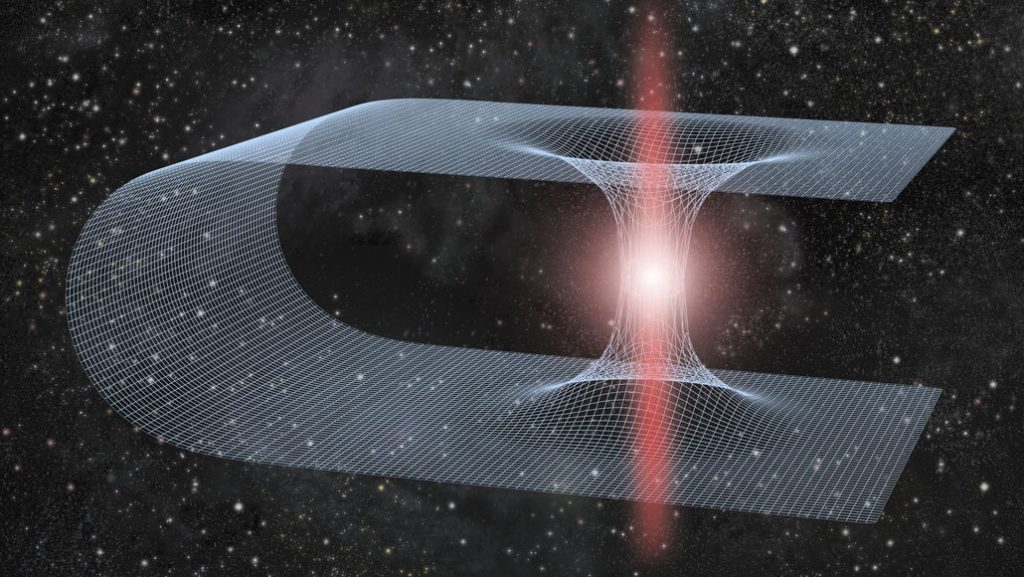In the vast expanse of the cosmos, where the laws of physics stretch beyond our comprehension, black holes and wormholes stand as two of the most enigmatic and intriguing phenomena. While black holes are regions in space where gravity is so intense that nothing can escape, not even light, wormholes are theoretical passages that could potentially create shortcuts for long journeys across the universe. Both these cosmic entities bend the fabric of space-time in profound ways, offering a glimpse into the mysteries of the universe and challenging our understanding of its fundamental structure. In this article, we will explore the fascinating connections between wormholes and black holes, discuss their properties, and delve into the scientific theories and discoveries that have brought us closer to understanding these cosmic enigmas.
Black Holes: The Cosmic Abyss
Before diving into the intricacies of wormholes, let’s first explore the captivating world of black holes. Black holes are formed when massive stars collapse under their own gravity at the end of their life cycles. The gravitational pull near a black hole’s event horizon, the point of no return, is so intense that not even light can escape its grasp. This makes black holes invisible to the naked eye and challenging to study directly.
The concept of a black hole was first proposed by the physicist John Michell in the late 18th century and later expanded upon by Albert Einstein’s theory of general relativity. Since then, black holes have captured the imagination of scientists and the public alike, becoming central to our understanding of the cosmos and its evolution.
Wormholes: Cosmic Shortcuts
While black holes represent the ultimate cosmic prisons, wormholes offer a tantalizing possibility of cosmic shortcuts. Wormholes, also known as Einstein-Rosen bridges, are theoretical passages that connect two distant points in space-time, potentially allowing for rapid travel between them. In essence, a wormhole acts as a tunnel through the fabric of space-time, bypassing the vast distances that separate celestial objects.
The idea of wormholes was first introduced by Albert Einstein and his colleague Nathan Rosen in 1935 as a solution to the equations of general relativity. Although wormholes remain purely theoretical and have not been observed directly, they have captured the imagination of scientists and science fiction writers alike, offering a glimpse into the possibilities of interstellar travel and the nature of the universe itself.
Bridging the Gap: Wormholes and Black Holes
The connection between wormholes and black holes lies in their shared ability to bend and warp the fabric of space-time. According to general relativity, massive objects like stars and black holes create curves in space-time, much like placing a heavy object on a stretched rubber sheet. Wormholes, on the other hand, are theorized to be bridges or tunnels that could connect two of these curved regions, allowing for a shortcut through space-time.
One intriguing possibility is that black holes themselves could harbor wormholes within their event horizons. These so-called “traversable wormholes” would provide a passage through the black hole, allowing matter and potentially even spacecraft to travel through without being crushed by the intense gravitational forces. However, entering a black hole or traversing a wormhole presents immense challenges and risks, given the extreme conditions and unknown physics involved.
Theoretical Challenges and Exotic Matter
While the concept of wormholes is mathematically consistent with the equations of general relativity, several theoretical challenges and constraints must be overcome to make them a reality. One significant issue is the stability of wormholes, which are prone to collapse due to the extreme gravitational forces acting upon them.
To keep a wormhole stable and prevent it from collapsing, scientists propose the existence of exotic matter with negative energy density. This exotic matter would create repulsive gravitational effects, counteracting the crushing gravitational forces near the wormhole’s throat and keeping it open. However, the existence and properties of exotic matter remain speculative and have not been observed or confirmed experimentally.
Observational Evidence and Future Prospects
Despite the theoretical nature of wormholes, astronomers and physicists continue to search for observational evidence that could support their existence. One approach involves studying the gravitational lensing effects caused by massive objects, such as galaxies and black holes, to look for signatures of wormholes. Another avenue of research explores the potential connections between wormholes and phenomena like dark matter and dark energy, which constitute the majority of the universe’s mass-energy content but remain poorly understood.
As our understanding of the universe expands and technology advances, future missions and experiments, such as gravitational wave detectors and space telescopes, may provide new insights into the nature of black holes and the possibility of wormholes. These advancements could revolutionize our understanding of space-time and open up new frontiers in exploration and discovery.
Conclusion
Wormholes and black holes represent two of the most captivating and mysterious phenomena in the cosmos, stretching the limits of our understanding of space-time and the laws of physics. While black holes have been observed indirectly through their effects on surrounding matter and gravitational waves, wormholes remain a theoretical construct, tantalizing scientists and enthusiasts with the promise of interstellar travel and cosmic shortcuts.
The quest to unravel the secrets of black holes and wormholes continues to drive scientific exploration and discovery, pushing the boundaries of what we know about the universe and our place within it. Whether we will ever harness the power of these cosmic enigmas for practical purposes remains an open question, but one thing is certain: the journey to understanding the true nature of black holes, wormholes, and the fabric of space-time is far from over, and the possibilities are limitless.
Read More: The Fermi Bubbles: Giant Structures at the Center of the Milky Way
